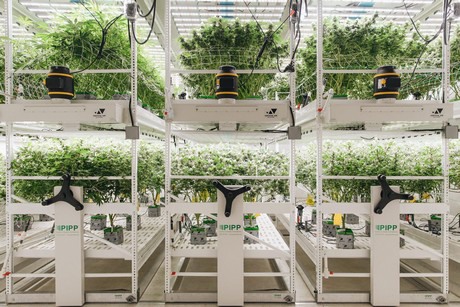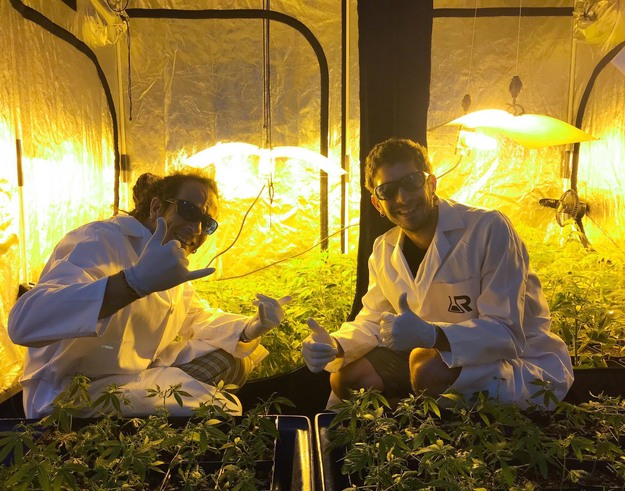Today, we continue with our special series on the cannabis industry’s most famous celebration with insights coming from Michael Williamson with Pipp Horticulture and Davide Agostini with ReLash Lab.
Pipp Horticulture
Unlike other segments of the horticulture industry, cannabis growers have been heavily relying on vertical farming for various reasons. “Just like most things in cannabis cultivation, it seems to be a multitude of factors contributing to the acceptance of multi-tier vertical farming. We first must acknowledge the improvements in LED lighting, i.e. form factor, spectrum, temperature, efficiency, and performance,” says Michael Williamson with Pipp Horticulture, one of the leading companies in the vertical farming space. “Another major factor influencing the pivoting to vertical farming is coming from the investor/owner class and relates 100% to revenue per sq. ft. of canopy that a Multi-Tier Vertical Farming System provides. For example, in a single-tier facility with mobile benches the ratio of canopy to room size in sq. ft. is roughly 65:100. A 2-tier facility equates to roughly 130:100 and a 3-tier facility equates to roughly 185:100. As you can see vertical farming can create significant amount of additional canopy that simply cannot exist in singe tier cultivation.“

Indeed, Michael points out that Pipp has seen an upward trend of vertical farming facility buildouts. “Pipp has installation in over 1,000 cultivation and post-harvest rooms,” he points out. “We are also seeing a big need and use for Pipp's space optimization solutions in post-harvest areas such as drying, curing, distribution, vaults etc. Outside of cannabis, we are also seeing small to large leafy greens, micro-greens, and herbs growers exploring indoor vertical solutions from Pipp. The growers are seeking alternatives to their current practices due to high shrink/loss rates in outdoor cultivation, unpredictable climate challenges and to create a more consistent product using up to 80% less water and fertilizers. We can say with confidence that vertical farming is here to stay and will only become more automated and efficient in the future.”
ReLash Lab
“During 2021, the Spanish cannabis market could be divided into three segments, each of which is subject to slightly different regulations,” says Davide Agostini with ReLash Lab, a Spanish cannabis company with a cultivation facility near Granada, Spain. “First of all, there are the cannabis social clubs. Even though there is a lot going on in this segment, this cannot be really defined as a full-fledged market. This is because all the cannabis sold and purchased in these clubs are considered a donation (since these clubs are not companies, but rather associations). With regards to this sector, the government didn’t care about improving the legal uncertainty, thus leaving activists, patients, and consumers in the hands of the illicit market.”

“Another segment is the nascent CBD market. Thanks to the push by the Italian and Swiss markets, but also thanks to the recognition of the EU, Spain has experienced huge growth in this sector. Small entrepreneurs and growers are active within clearly legally defined limits, yet they receive no support at all from the Spanish government. Actually, they are oftentimes subject to repression and intimidation. All in all, the CBD market in Spain hasn’t been taken into consideration by the government as a venue to attract investments and create jobs.”
“The last sector is that of the big private companies. As of now, only 5 companies have received the license by the Spanish medicine agency to grow, extract, and distribute cannabis with a high THC percentage.
“In terms of regulations for the cannabis sector, I personally think that the government should seriously consider doing a complete overhaul of cannabis regulations, trying to develop and to capitalize on the different modes of use of this plant. In this way, not only a lot of jobs would be created, but also patients and consumers would greatly benefit from that.”
